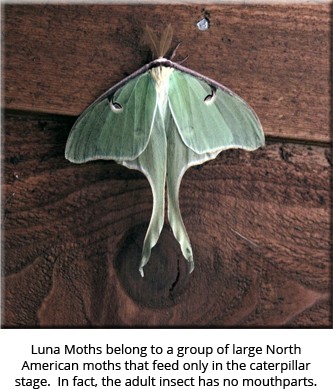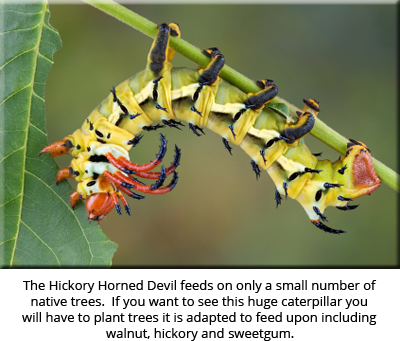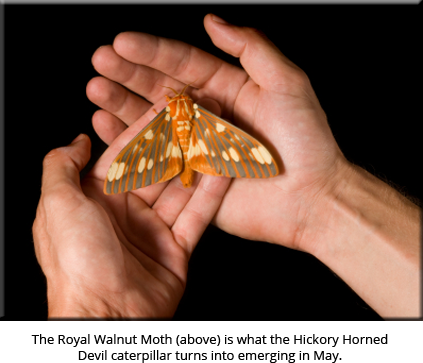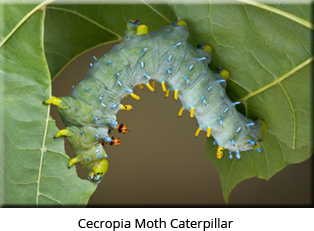 Effective planting for wildlife involves providing three basic elements: food, shelter and water. When these requirements are met wildlife will take up residence. Native trees and shrubs can provide these basic elements resulting in a greater diversity of wildlife in your landscape. Keep in mind that when planting native trees and shrubs you are inviting insects and other creatures to browse on your plants and that is a good thing.
Effective planting for wildlife involves providing three basic elements: food, shelter and water. When these requirements are met wildlife will take up residence. Native trees and shrubs can provide these basic elements resulting in a greater diversity of wildlife in your landscape. Keep in mind that when planting native trees and shrubs you are inviting insects and other creatures to browse on your plants and that is a good thing.
Homeowners may think that having insects feed on their native trees and shrubs would signal a problem; here we are encouraging it. A diverse assortment of native trees and shrubs species provides food and cover for the larval and adult stages of many insects. Native trees and shrubs are adapted to being fed upon and are seldom harmed by insect herbivores.
Female insects generally lay only a few eggs on larval hostplants. Depositing too many would attract predators. Some offspring inevitably will be found and eaten by birds which become conditioned to successfully finding food in your landscape thus returning often. For instance, winter birds are common around feeders because they are rewarded with food you provide. The same is true in summer although the food will be homegrown insects found on your native trees and shrubs. Planting native hostplants keeps insects and birds tied to your landscaping for weeks or months as the larval stages mature.
Below is a chart of commonly grown trees often available at Riverside Native Trees and how many species of butterflies and moth larva are known to feed on them. The list is by no means exhaustive and is taken from Bringing Nature Home by Douglas W. Tallamy and is published by Timber Press.
| Selected Woody Plants Ranked By Ability To Support Lepidoptera (Butterfly and Moth) Species | ||
|---|---|---|
| Common Name | Plant Genus | Species Supported |
| Oak | Quercus | 534 |
| Willow | Salix | 456 |
| Cherry, Plum | Prunus | 456 |
| Birch | Betula | 413 |
| Poplar, Cottonwood | Populus | 368 |
| Maple, Boxelder | Acer | 285 |
| Elm | Ulmus | 213 |
| Hickory | Carya | 200 |
| Alder | Alnus | 156 |
| Ash | Fraxinus | 150 |
| Basswood, Linden | Tilia | 150 |
| Filbert, Hazelnut | Corylus | 131 |
| Walnut, Butternut | Juglans | 130 |
| Beech | Fagus | 126 |
| Chestnut | Castanea | 125 |
 By planting the native trees mentioned in the table above it is possible to provide food for hundreds of species of butterflies and moths. You will not get all of them but you are bound to get a few; and the variety will change as your landscape matures. Some of these species may be small brown moths that few people recognize but still have a role to play in our environment. Others, though, can be quite spectacular! The Royal Walnut Moth is one of the largest moths in North America. Its larva is known as the Hickory Horned Devil and looks like a ferocious beast. In reality, it is a harmless caterpillar adorned with horns and bright colors that feeds inconspicuously in the canopy of trees until late summer.
By planting the native trees mentioned in the table above it is possible to provide food for hundreds of species of butterflies and moths. You will not get all of them but you are bound to get a few; and the variety will change as your landscape matures. Some of these species may be small brown moths that few people recognize but still have a role to play in our environment. Others, though, can be quite spectacular! The Royal Walnut Moth is one of the largest moths in North America. Its larva is known as the Hickory Horned Devil and looks like a ferocious beast. In reality, it is a harmless caterpillar adorned with horns and bright colors that feeds inconspicuously in the canopy of trees until late summer.
 In early Fall, the 6”+ long caterpillar crawls down the tree and across the yard looking for a place to burrow into the ground and pupate and this is when we often see them. You will not see this beautiful caterpillar or the adult moth unless you plant the proper native trees their larvae need.
In early Fall, the 6”+ long caterpillar crawls down the tree and across the yard looking for a place to burrow into the ground and pupate and this is when we often see them. You will not see this beautiful caterpillar or the adult moth unless you plant the proper native trees their larvae need.
Native trees offer more than just leaves to animals as food. Fruits and nuts are important food resources for animals too. Acorns are typically a fall crop eaten by squirrels, chipmunks, turkeys, crows and deer. It is a rich food source supplying energy for the long winter. In mid-summer wild black cherries ripen and birds will fly in a take advantage of the free food. In contrast, exotic (non-native) species of trees and shrubs may produce a lovely flower but do not produce usable fruit for birds or leaves for insects to consume. The nectar produced is generally only available for a short time.
So What Should I Plant?
Using Table 1 above, personal observations and other resources we have selected a number of species that grow fast and are used by insects and birds as food sources. We have also considered which species can grow well in a variety of soil types, and/or have good fall color. Some have other outstanding characteristics like beautiful bark, early spring growth color, flowers that need animal pollinators or produce fruit attractive to birds. In our opinion, these are highly desirable tree and shrub species for both the homeowner and wildlife.

- Bur Oak
- Chinkapin Oak
- Red Oak
- Wild Black Cherry
- River Birch
- Yellow Birch
- Red Maple
- Silver Maple
- Boxelder
- Chestnut
- Sweetgum
- Spicebush
- Silky Dogwood
- Gray Dogwood
- Pagoda Dogwood
- Hazelnut or American Filbert
- American Plum
We encourage you to think about adding native species to your landscape as time and space permit. They possess many positive attributes besides being used as food by insects. We just have to offer them in our landscape!
